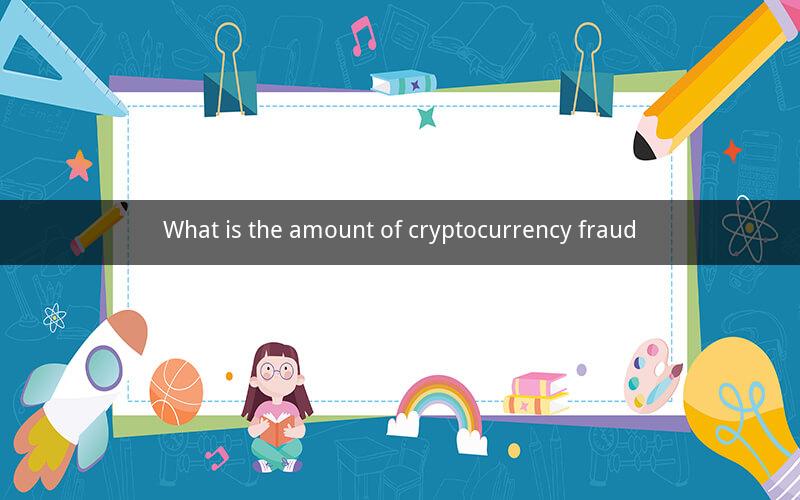
Cryptocurrency Fraud: An In-Depth Look at Its Scope and Impact
Table of Contents
1. Introduction to Cryptocurrency Fraud
2. Types of Cryptocurrency Fraud
1. Phishing Scams
2. Ponzi Schemes
3. Ransomware Attacks
4. Fake Exchanges
5. Pump and Dump Schemes
3. The Global Impact of Cryptocurrency Fraud
4. The Role of Regulations and Security Measures
5. Case Studies: Notable Cryptocurrency Fraud Incidents
6. Prevention and Protection Strategies
7. Conclusion
1. Introduction to Cryptocurrency Fraud
Cryptocurrency fraud has become a significant concern in the rapidly growing digital currency market. As the value of cryptocurrencies like Bitcoin, Ethereum, and Litecoin continues to rise, so does the allure for fraudulent activities. Understanding the amount of cryptocurrency fraud and its implications is crucial for investors and users to protect themselves.
2. Types of Cryptocurrency Fraud
1. Phishing Scams
Phishing scams are among the most common forms of cryptocurrency fraud. These scams involve sending fraudulent emails or messages that appear to be from legitimate cryptocurrency exchanges, wallets, or services. The goal is to trick individuals into providing their private keys, login credentials, or other sensitive information.
2. Ponzi Schemes
Ponzi schemes are fraudulent investment operations that promise high returns to investors using funds from new investors. In the cryptocurrency world, these schemes often involve promising unrealistic returns on investments in a cryptocurrency or a related project. Once the scheme collapses, investors lose their money.
3. Ransomware Attacks
Ransomware attacks are cyberattacks where malicious software encrypts a victim's data, rendering it inaccessible until a ransom is paid. In the context of cryptocurrency, attackers may demand a ransom in cryptocurrencies, making it harder for law enforcement to trace the payment.
4. Fake Exchanges
Fake exchanges mimic legitimate cryptocurrency trading platforms, offering users the ability to buy, sell, and trade digital currencies. However, these exchanges are fraudulent and often used to steal funds from unsuspecting users.
5. Pump and Dump Schemes
Pump and dump schemes involve manipulating the price of a cryptocurrency by artificially inflating it (pumping) and then selling off the cryptocurrency at a higher price (dumping) to make a profit. This can lead to significant losses for investors who buy the cryptocurrency at the inflated price.
3. The Global Impact of Cryptocurrency Fraud
The global impact of cryptocurrency fraud is substantial. According to a report by CipherTrace, the total amount of cryptocurrency fraud in 2020 was estimated to be around $1.9 billion. This figure includes various types of fraud, such as theft, ransomware, and exchange hacks.
4. The Role of Regulations and Security Measures
Regulatory bodies and security measures play a crucial role in combating cryptocurrency fraud. Governments and financial institutions are increasingly implementing regulations to monitor and control the cryptocurrency market. Additionally, security measures such as two-factor authentication, cold storage, and secure messaging can help protect users from falling victim to fraud.
5. Case Studies: Notable Cryptocurrency Fraud Incidents
1. Mt. Gox Hack (2014)
The Mt. Gox hack is one of the most infamous cryptocurrency fraud incidents. The Tokyo-based exchange, which was once the largest Bitcoin exchange in the world, lost approximately 850,000 Bitcoin due to a combination of theft and technical failures.
2. QuadrigaCX Collapse (2020)
QuadrigaCX, a Canadian cryptocurrency exchange, collapsed in 2020, leaving users with millions of dollars in missing funds. The CEO, Gerald Cotten, died suddenly, and it was later revealed that he had sole access to the exchange's cold wallets, which contained the missing funds.
6. Prevention and Protection Strategies
To prevent and protect against cryptocurrency fraud, individuals and organizations can take several measures:
- Stay informed about the latest types of cryptocurrency fraud.
- Use reputable exchanges and wallets.
- Enable two-factor authentication and other security features.
- Be cautious of unsolicited emails or messages.
- Regularly backup cryptocurrency wallets and private keys.
- Conduct thorough research on investment opportunities.
7. Conclusion
Cryptocurrency fraud is a significant threat to the digital currency market. Understanding the types, scope, and impact of these fraudulent activities is essential for users and investors to protect themselves. By implementing robust security measures and staying vigilant, the cryptocurrency community can work towards reducing the amount of fraud in the market.
Questions and Answers
1. Q: What is the most common type of cryptocurrency fraud?
A: Phishing scams are the most common type of cryptocurrency fraud.
2. Q: How can I tell if a cryptocurrency exchange is legitimate?
A: Look for secure website features, a strong reputation, and regulatory compliance.
3. Q: What should I do if I suspect I have been a victim of cryptocurrency fraud?
A: Contact law enforcement and report the incident immediately.
4. Q: Are there any legal consequences for engaging in cryptocurrency fraud?
A: Yes, engaging in cryptocurrency fraud can lead to legal consequences, including fines and imprisonment.
5. Q: How can I protect my private keys from being stolen?
A: Store private keys in a secure, offline location, such as a hardware wallet.
6. Q: What is the role of blockchain in preventing cryptocurrency fraud?
A: Blockchain's decentralized nature makes it more difficult for attackers to alter transaction records.
7. Q: Can cryptocurrency fraud be completely eliminated?
A: While it is challenging to eliminate cryptocurrency fraud entirely, implementing robust security measures can significantly reduce its occurrence.
8. Q: How can I stay informed about the latest cryptocurrency fraud trends?
A: Follow reputable news sources, cryptocurrency forums, and security blogs.
9. Q: What should I do if I receive a suspicious email from a cryptocurrency exchange?
A: Do not click on any links or provide any personal information. Report the email to the exchange's customer support.
10. Q: How can businesses protect themselves from cryptocurrency fraud?
A: Implement strict security protocols, conduct regular audits, and provide employee training on fraud awareness.